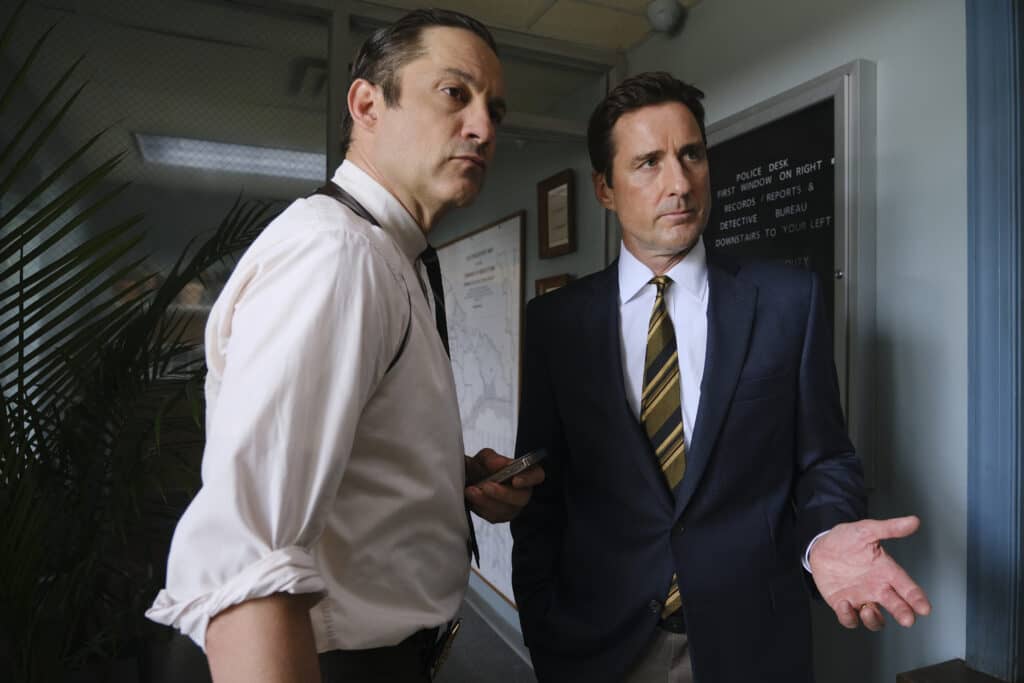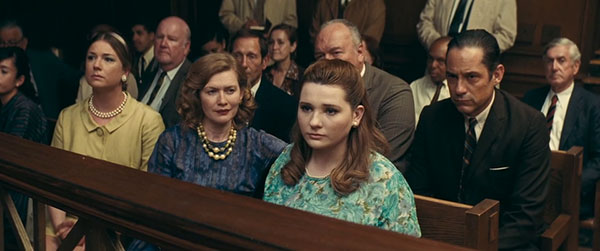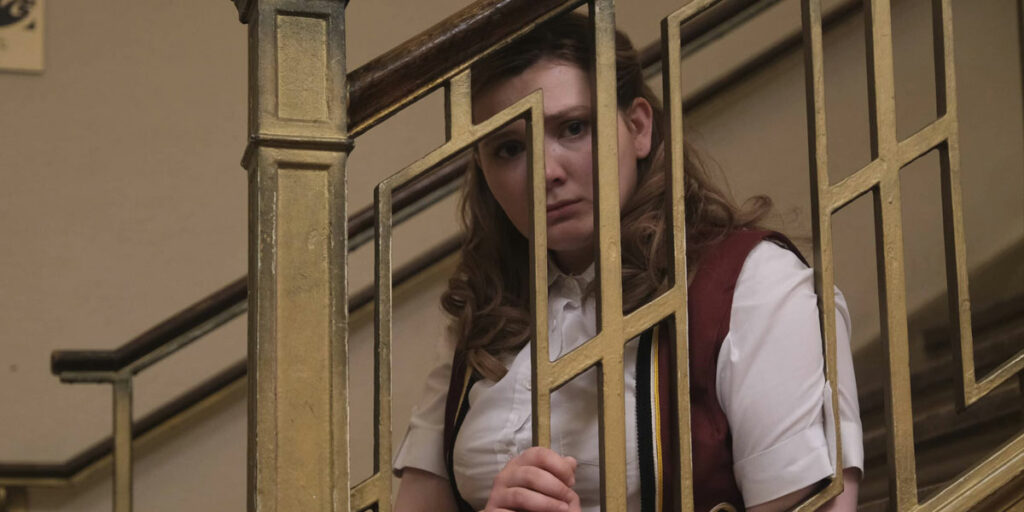Abigail Breslin gives a career-best performance in Miranda’s Victim, the untold true story of how a sexual assault case forever changed the American legal system.
Miranda’s Victim was a fascinating film to watch knowing little to nothing about the plot. All I knew was that Abigail Breslin was in the lead and that it was based on a true story. Little did I know that the film tells the complex story of how the Miranda Rights came to be and the terrible crime that greatly affected the American legal system.
The creation of the Miranda Rights dates back to 1966: the Miranda Warning states that law enforcement officers are required to remind whoever they are arresting of their rights and protections. It starts with the famous lines seen in plenty of procedurals. “You have the right to remain silent. Anything you say can and will be used against you in a court of law…” This warning is intended to protect a person’s Fifth Amendment right to refuse to answer questions that might be self-incriminating, and what led to its creation is the 1966 Supreme Court case of Miranda v. Arizona.
But Miranda’s Victim takes us even further back, to 1963 Arizona, where a young woman named Patricia Weir was kidnapped and raped by a man named Ernesto Miranda. This is what led to the creation of the Miranda Rights, as the Supreme Court ruled that the latter should have been told that he had the right to remain silent before he answered incriminating questions and signed the confession that got him a 40 year prison sentence. As a result, the confession was excluded from the new trial that followed.
At the beginning of Miranda’s Victim, we meet Patrica Weir (Abigail Breslin, of Stillwater), an 18-year-old girl who seems to be living a very normal life during the 1960s. One night, as she is walking home from her local bus stop, Miranda kidnaps and rapes her, forever changing the trajectory of her life. Even though it was rare at the time for a victim of such crime to report it, Patrica decides to go to the police to try and find her perpetrator, so that he can never do this to someone else again.

Eventually, the police find Miranda, arrest him and, with the help of prosecutor Lawrence Turoff (Luke Wilson, of Fingernails), he gets a 40-year sentence in prison. However, Miranda insists that he was not treated fairly when he was arrested, and most importantly he did not understand the right he had to defend himself before confessing to the crime. John Flynn (Ryan Phillippe), a famous criminal defense lawyer, takes his case, and Miranda initially gets out of prison, bringing the Miranda Rights into practice. Now, Patricia has to retraumatize herself in order to go on trial to put Miranda back in prison, since his confession is no longer valid.
All throughout my life, I have heard of Miranda Rights. Whether it was hearing them endless times on tv or having to memorize them for my criminal law class in high school, they have always been in my life in some odd way. Even though I probably had memorized the start of the Miranda Warnings by the time I was 8, I never thought about how they came to be. Similarly to most aspects of American history, the story isn’t a happy one by any means.
While Miranda’s Victim does tell a very sad story, one of the best parts of the film is that, similarly to real life, it isn’t always immensely dark. Watching films about sexual assault is rightfully emotionally draining, but director Michelle Danner is able to find the light and love in this story. For example, characters John Flynn and Lawrence Turoff, who play lawyers, both have very light personalities, cracking jokes at different times during their respective scenes giving audiences brief breaths of levity. In another film, these slight jokes may not have landed or could even have come off as disrespectful, but Miranda’s Victim is able to have these lighter moments all while being respectful to the crime and Patricia’s story.
However, the best part of Miranda’s Victim is Abigail Breslin’s performance. Patricia was a victim both of sexual assault and of the American legal system and playing a character that is so traumatized requires a lot of emotional labor from an actress. Breslin does it with such grace that she makes the audience feel every emotion with her as we follow her life.
Even with a strong leading performance, one of Miranda’s Victim’s biggest flaws is how this story is written. Patricia Weir’s story is absolutely a necessary tale to tell, but the script is written from an objective point of view when a more personal approach might have made it better. Writers George Kolber and J. Craig Stiles tell this story from almost every perspective, and in doing so tackle a lot of social issues, from systematic gender inequality to police abusing their power and their influence over others. While all of these social issues deserve to be talked about, there isn’t enough actual discussion of these topics. Miranda’s Victim just shows us how complex and deeply troubled the American justice system is on all fronts, but doesn’t have a strong enough commentary on what we should do with this information.

While this is a pretty big problem with the film as a whole, despite the script being too surface-level on social issues, Miranda’s Victim is a truly great film. Everyone in the ensemble is great, with a particularly great supporting turn from Luke Wilson, and the film leaves you feeling hopeful for future improvements within the legal system regarding sexual assault. This is not only a good movie, but also a step in the right direction regarding ethical true crime stories being told in an authentic way. Patrica Weir’s story is one of the most important events of the 1960s, and given that it is told in such a respectful way, it is one that deserves to be – and hopefully will soon be – seen by the masses.
Miranda’s Victim opened the Gasparilla International Film Festival on March 23 and opened in select US theaters and on demand on October 6, 2023. The film will be released on Digital Platforms in the UK on December 29.

